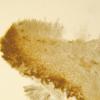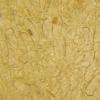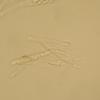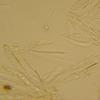
27-07-2015 21:04
 Zuzana Sochorová (Egertová)
Zuzana Sochorová (Egertová)
Hello,I found this Genea in Abkhazia (Great Caucas

27-07-2015 14:48
 Leandro Sánchez
Leandro Sánchez
Sur tige d'ombellifèreAsques 33-38/4-5, croziers

26-07-2015 16:17
Steve ClementsSalut,Après avoir lu la clé de Bernard Declercq

26-07-2015 13:38
 Rubén Martínez-Gil
Rubén Martínez-Gil
Hola a todos. Subo fotos de una Peziza que encont

24-07-2015 17:04
Matthias TheissHello,I'd like to show a Microglossum-like ascomyc

25-07-2015 01:57
Lepista Zacarias2015-07-18 Pyreno on leaves Hi everyone, Maybe s

25-07-2015 07:55
 Maren Kamke
Maren Kamke
Hi everybody,I thought of M. typhicola, but the as

22-07-2015 22:54
 Rubén Martínez-Gil
Rubén Martínez-Gil
Hola a todos. Subo unas fotos de un asco que enco
Salut à tous,
Yesterday I found many apothecia of this interesting species on fallen leaves of Camellia japonica They measure up to 1.8 mm and had short stalks (up to 1mm). They were present on almost every leaf I inspected.
Asci IKI BB, croziers not observed (despite intense searching...)
Ascospores 9.8 - 11.9 x 5 - 6 µm, usually with two very large guttules and several smaller ones, with delicate sheaths which quickly disappear in water.
Paraphyses with a long, continuous vacuole (as in Mollisia)
Flank cells often with brown encrustation, and with large refractive vacuoles which quickly collapse and turn brown.
My specimen seems quite close to R.'kalevi' , though the ascospore dimensions are just a little different, as is the guttulation (and substrate). I'll come back later with some photos of ascus bases.
Am I thinking along the right lines? Has anyone collected anything similar on Camellia?
Amitiés,
Nick

this is just an idle thought - I'm sure others will prove far more knowledgeable - but those spores remind me of those of Trochila spp.
best wishes
Chris

I have no idea what species it could be - Camellia is a substrate not growing in Central Europe. But I think it is a Sclerotiniaceae because of the type of apical apparatus. And - yes - why not Rutstroemia? The spores are fully guttulate and elongate, and the macroscopical appearance could fit.
Regards from Lothar

what an interesting species! I see that I do not have any asco on Camellia leaves in my database, and I have no idea of the species. Rutstroemia is a good option. What shape do the excipular cells have? A photo would be useful, also if there is any gel layer.
Is it a park where you collected the fungus?
Zotto
Hi all,
Amazing Kutsuna! - I had hoped that this fungus was known in Japan!
I saw a few old light brown spores and your macroscopy and spore size fit well with mine. I don't suppose you found a name?
Zotto - Yes, a park/public garden. There is no gel - The third photo shows the area directly below the hymenium - Sorry but the anatomical teminology escapes me :)
Hopefully you agree that the ascus bases have no croziers (I found the photography tricky here!). Sometimes the ascogenus cells have little 'bulges' but I never saw these reach up to make a 'full' crozier.
Best wishes and apologies for the many photos,
Nick

So we should know quite enough about this species - maybe Japanese workers (Tsuyoshi Hosoya, Yanjie Zhao) could help? I will send them a link.
Zotto










